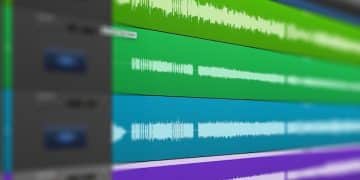Master Network Monitoring: Wireshark for Pro Packet Analysis

Master network monitoring involves using tools like Wireshark to analyze packet data, providing insights into network performance, security threats, and communication issues, enabling professionals to proactively manage and optimize their network infrastructure.
In today’s interconnected world, understanding network traffic is crucial for maintaining security and optimizing performance. Master network monitoring empowers you to decipher the language of your network, and Wireshark stands out as a leading tool in this domain, allowing you to analyze packet data like a pro.
Understanding Network Monitoring
Network monitoring is the process of observing a computer network for slow or failing components and potential issues. By monitoring the network, administrators can identify bottlenecks, detect anomalies, and ensure optimal performance. Let’s dive into why this is essential.
Why Network Monitoring Matters
Effective network monitoring is vital for maintaining network health and security. Without it, organizations are vulnerable to a multitude of problems.
Network monitoring is not just about fixing problems as they arise; it’s about preventing them in the first place.
Benefits of Proactive Monitoring
Implementing a robust monitoring strategy offers numerous benefits that contribute to the overall efficiency and security of an organization.
- Early detection of network issues, preventing major disruptions.
- Improved network performance through identification of bottlenecks.
- Enhanced security by detecting malicious activities and vulnerabilities.
- Reduced downtime by quickly resolving network problems.
In summary, network monitoring is a proactive measure that ensures networks run smoothly, securely, and efficiently. By identifying and addressing issues before they escalate, organizations can maintain optimal performance and protect against potential threats. Ensuring robust network monitoring is not an option, but a necessity in today’s digital world.

Introduction to Wireshark
Wireshark is a free and open-source packet analyzer used for network troubleshooting, analysis, software and communications protocol development, and education. It captures network traffic and allows you to examine the data contained in each packet. Let’s see how it works.
What is a Packet Analyzer?
A packet analyzer, like Wireshark, is a tool that captures and examines network traffic. It intercepts data packets as they travel across a network, allowing you to inspect their contents.
Wireshark provides a user-friendly interface to analyze these packets, making it an essential tool for network administrators and security professionals.
Key Features of Wireshark
Wireshark is packed with features that make it a powerful tool for network analysis. Understanding these features is essential for effective network monitoring.
- Cross-platform: Available for Windows, macOS, and Linux.
- Live packet capture: Captures network traffic in real-time.
- Detailed packet inspection: Displays detailed information about each packet, including source and destination addresses, protocols, and data.
- Filtering: Allows you to filter traffic based on various criteria, such as protocol, IP address, or port number.
Ultimately, Wireshark’s comprehensive feature set makes it an indispensable tool for anyone looking to understand and troubleshoot network issues. By providing detailed insights into network traffic, Wireshark empowers users to diagnose problems and optimize performance effectively.
Setting Up Wireshark
Before you can start analyzing packets, you need to install and configure Wireshark. Here’s a guide to get you up and running. Ensure you have the necessary permissions to capture network traffic.
Installing Wireshark
The first step is to download and install Wireshark. The installation process is straightforward, but there are a few key considerations.
Make sure to download the correct version for your operating system from the official Wireshark website to avoid potential security risks or compatibility issues.
Configuring Wireshark for Capture
Once installed, you need to configure Wireshark to capture network traffic. This involves selecting the appropriate network interface and setting capture filters if needed.
Configuring Wireshark correctly ensures that you capture the traffic you’re interested in, without overwhelming the system with unnecessary data.
Best Practices for Initial Setup
To ensure a smooth setup process, follow these best practices.
- Run Wireshark with administrator privileges to ensure you can capture all traffic.
- Select the correct network interface to capture traffic from.
- Consider using capture filters to focus on specific traffic types.
- Regularly update Wireshark to benefit from the latest features and security patches.
Setting up Wireshark correctly is crucial for effective network monitoring. By following these steps and best practices, you can ensure that you’re capturing the right data and optimizing your analysis efforts. A properly configured Wireshark setup will provide you with the insights needed to maintain a healthy and secure network environment.
Capturing Packet Data
Capturing packet data is the foundation of network analysis with Wireshark. Understanding how to capture packets effectively is essential for obtaining meaningful insights. Let’s explore the details.
Selecting the Right Interface
Choosing the correct network interface is critical for capturing the intended traffic. Wireshark displays a list of available interfaces, and selecting the wrong one will result in capturing irrelevant data.
Ensure you know which interface corresponds to the network you want to monitor to avoid wasting time analyzing the wrong traffic.
Using Capture Filters
Capture filters allow you to specify which types of packets Wireshark should capture, based on protocol, IP address, or other criteria. They help reduce the amount of data captured, making analysis more manageable.
Using capture filters effectively can significantly improve the efficiency of your analysis by focusing only on the traffic that is relevant to your investigation.

Common Capture Filter Examples
Here are a few examples of common capture filters that can be used to target specific types of traffic.
tcp port 80: Captures HTTP traffic.ip.addr == 192.168.1.100: Captures traffic to or from the IP address 192.168.1.100.tcp.port == 21: Captures FTP traffic.
Effective packet capture is the first step in network analysis, and using the right interface and capture filters is crucial for obtaining relevant and manageable data. By following these guidelines, you can ensure that you’re collecting the information you need to diagnose network issues and optimize performance efficiently.
Analyzing Packet Data
Once you have captured packet data, the next step is to analyze it. Wireshark provides a range of tools and techniques to help you understand the data and identify potential issues. Let’s see how to use them.
Understanding the Wireshark Interface
Familiarizing yourself with the Wireshark interface is essential for effective analysis. The interface is divided into several sections, each serving a specific purpose.
Knowing where to find the information you need in the interface makes the analysis process much more efficient and less overwhelming.
Filtering Packets for Analysis
Display filters allow you to focus on specific packets within the captured data, based on various criteria such as protocol, IP address, or content. They are essential for narrowing down the data and identifying relevant packets.
Display filters are invaluable for isolating specific traffic patterns or issues, making it easier to diagnose problems and understand network behavior.
Using Color Coding to Identify Traffic
Wireshark uses color coding to visually differentiate between different types of traffic, making it easier to identify patterns and anomalies. Understanding the color codes can significantly speed up the analysis process.
Here are some common color codes:
- Green: TCP traffic.
- Blue: DNS traffic.
- Black: Packets with errors.
- Light Purple: HTTP traffic.
Analyzing packet data effectively requires a solid understanding of the Wireshark interface, the ability to use display filters, and familiarity with color coding. By mastering these techniques, you can quickly identify and diagnose network issues, optimize performance, and maintain a secure network environment.
Advanced Wireshark Techniques
To truly master network monitoring with Wireshark, you need to explore advanced techniques that enable deeper analysis and troubleshooting. Let’s dive into some of these advanced methods.
Following TCP Streams
Following TCP streams allows you to view the entire conversation between two endpoints, making it easier to understand the flow of data and identify any issues within the communication.
This technique is particularly useful for analyzing application-level protocols, such as HTTP or SMTP, where the entire transaction spans multiple packets.
Analyzing Protocol Statistics
Wireshark can generate statistics about various protocols, providing insights into the distribution of traffic and identifying potential bottlenecks or anomalies. These statistics can help you understand how your network is being used and where improvements can be made.
protocol statistics provide valuable insights into network behavior.
Using Expert Information
Wireshark’s Expert Info feature analyzes captured packets and identifies potential issues, such as retransmissions, TCP errors, or malformed packets. This feature can help you quickly pinpoint problems that might otherwise go unnoticed.
- Warnings: Indicate potential issues that may require further investigation.
- Errors: Highlight packets with known problems or anomalies.
- Notes: Provide additional information or context about specific packets.
Mastering advanced Wireshark techniques is essential for thorough network monitoring and troubleshooting. By following TCP streams, analyzing protocol statistics, and using Expert Info, you can unlock deeper insights into network behavior and more effectively diagnose and resolve complex issues.
| Key Point | Brief Description |
|---|---|
| 📝 Packet Capture | Capturing network traffic using Wireshark to analyze data packets. |
| 🔍 Display Filters | Using filters to focus on specific types of traffic, such as HTTP or DNS. |
| 🚦 Color Coding | Understanding color codes to quickly identify different types of network traffic. |
| 📊 Protocol Stats | Analyzing statistics to identify traffic distribution and potential bottlenecks. |
Frequently Asked Questions
▼
Wireshark is used for network troubleshooting, analysis, software and communications protocol development, and education. It captures and examines network traffic, allowing you to inspect packet content.
▼
Wireshark has a learning curve. Basic packet capture and filtering are relatively easy, but advanced analysis requires deeper understanding of networking protocols and techniques. Tutorials and practice are key.
▼
Yes, Wireshark can capture wireless traffic, but it requires a wireless adapter that supports monitor mode. This mode allows the adapter to capture all traffic, regardless of the destination.
▼
Wireshark itself is safe to use, but capturing and analyzing network traffic may involve sensitive data. Ensure you comply with privacy regulations and ethical guidelines when using Wireshark in production networks.
▼
You can filter traffic using display filters. These filters allow you to specify which packets are displayed based on protocol, IP address, port number, or other criteria. Common filters include “http” or “ip.addr == 192.168.1.1”
Conclusion
Mastering network monitoring with Wireshark can significantly improve your ability to maintain a secure and efficient network. By understanding packet data, identifying potential issues, and implementing proactive measures, you can protect your network and ensure optimal performance.





